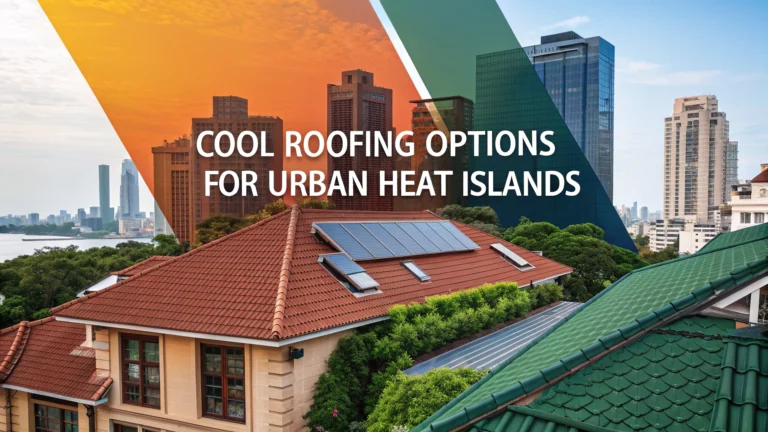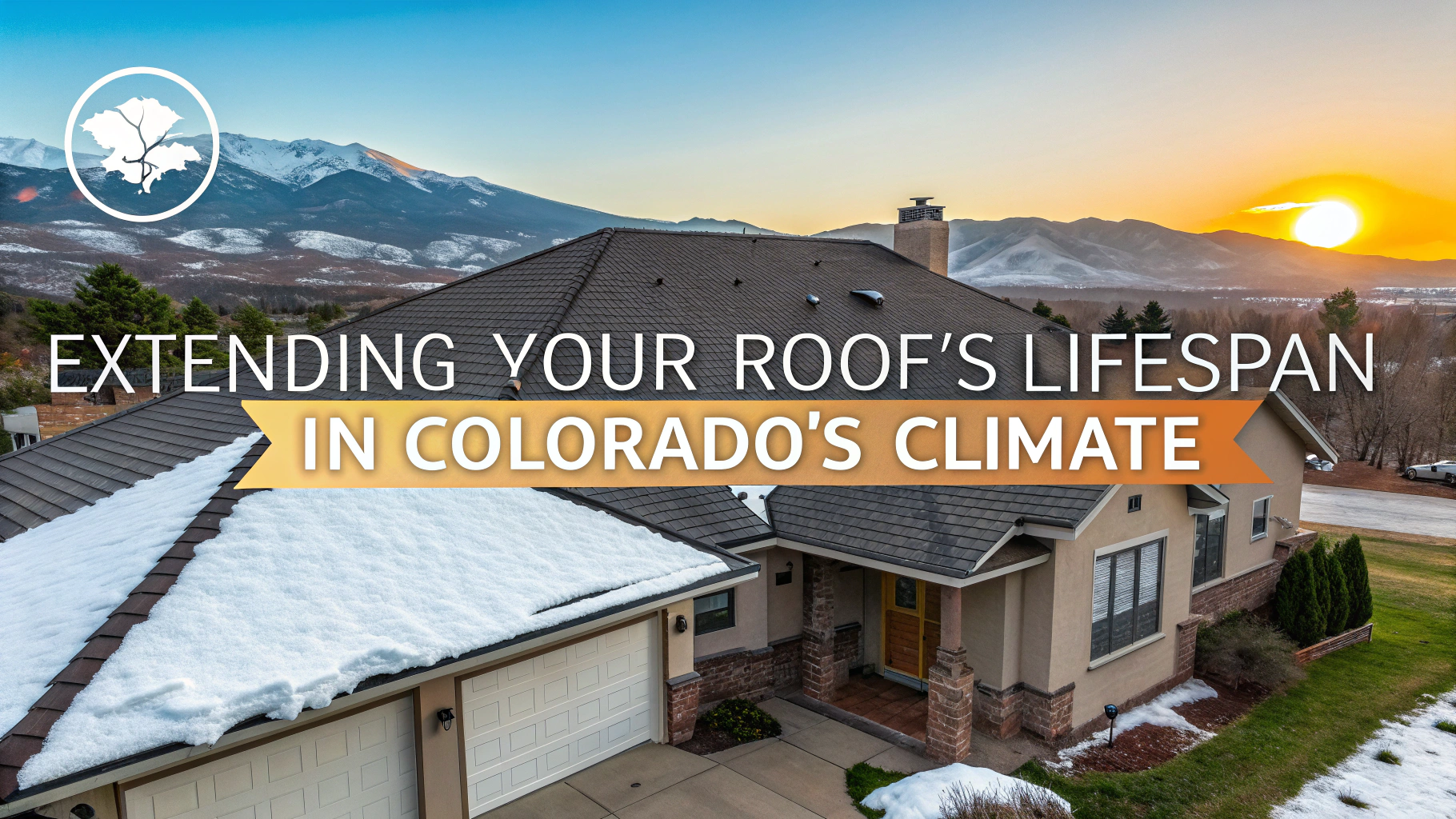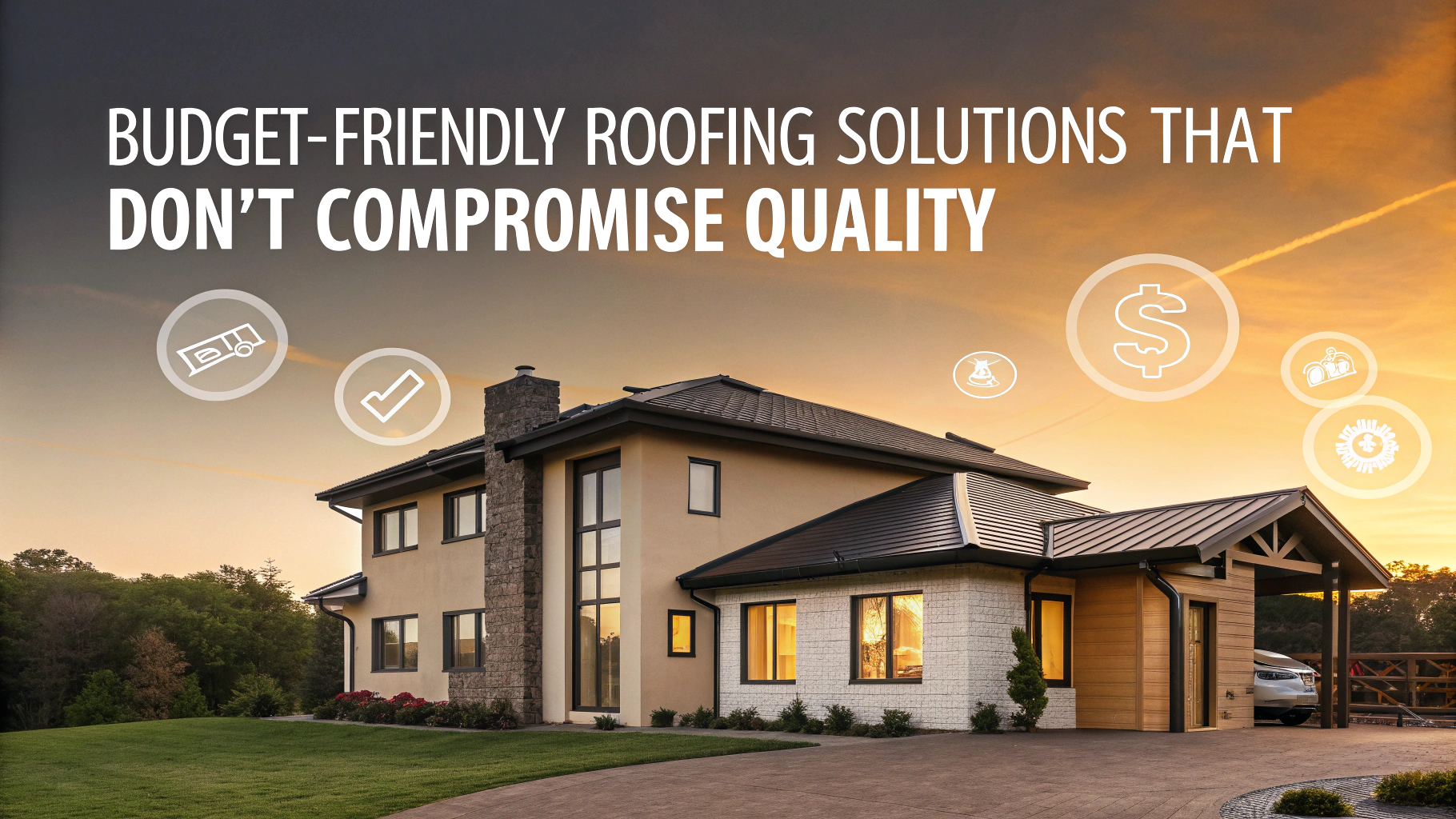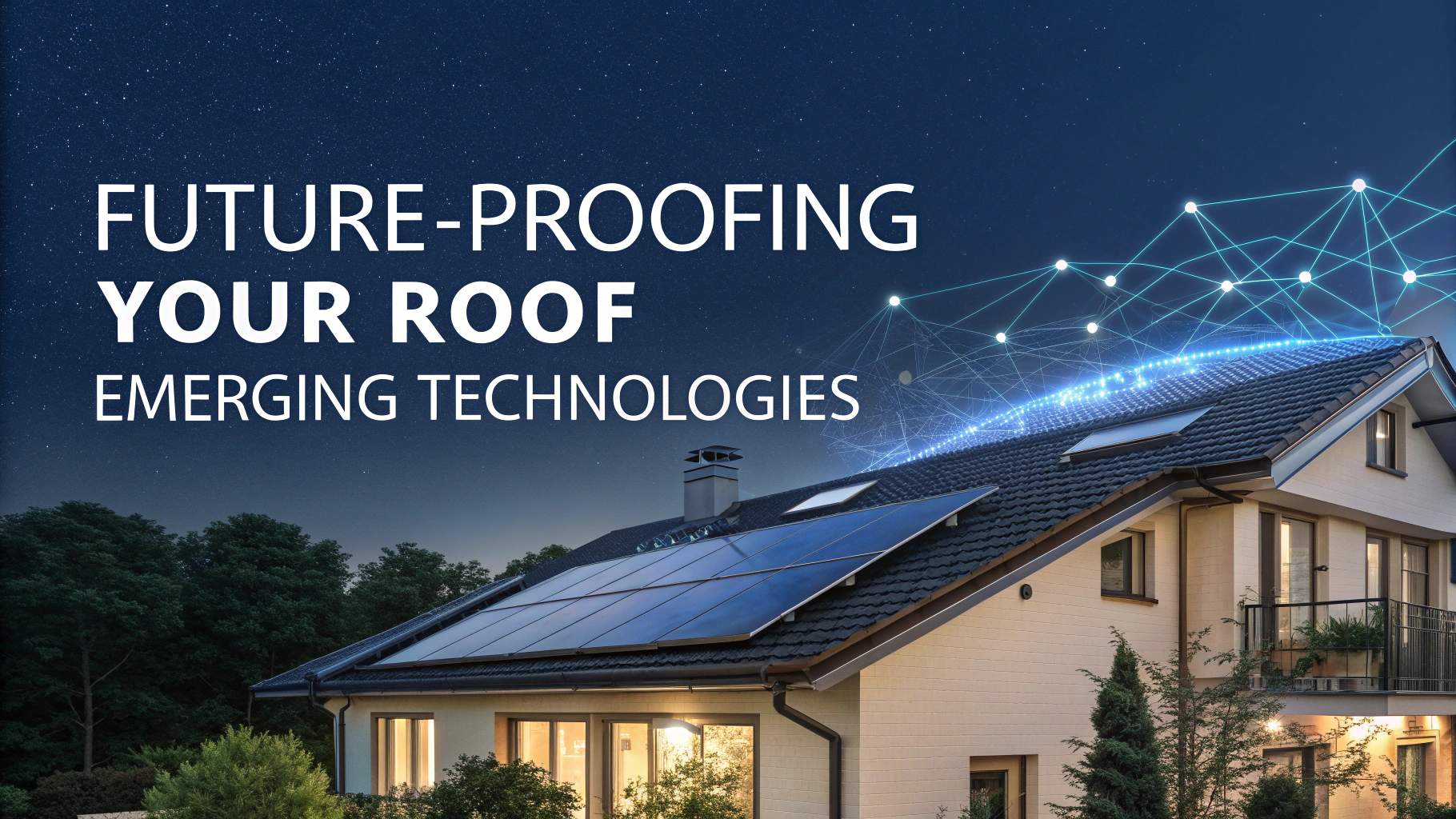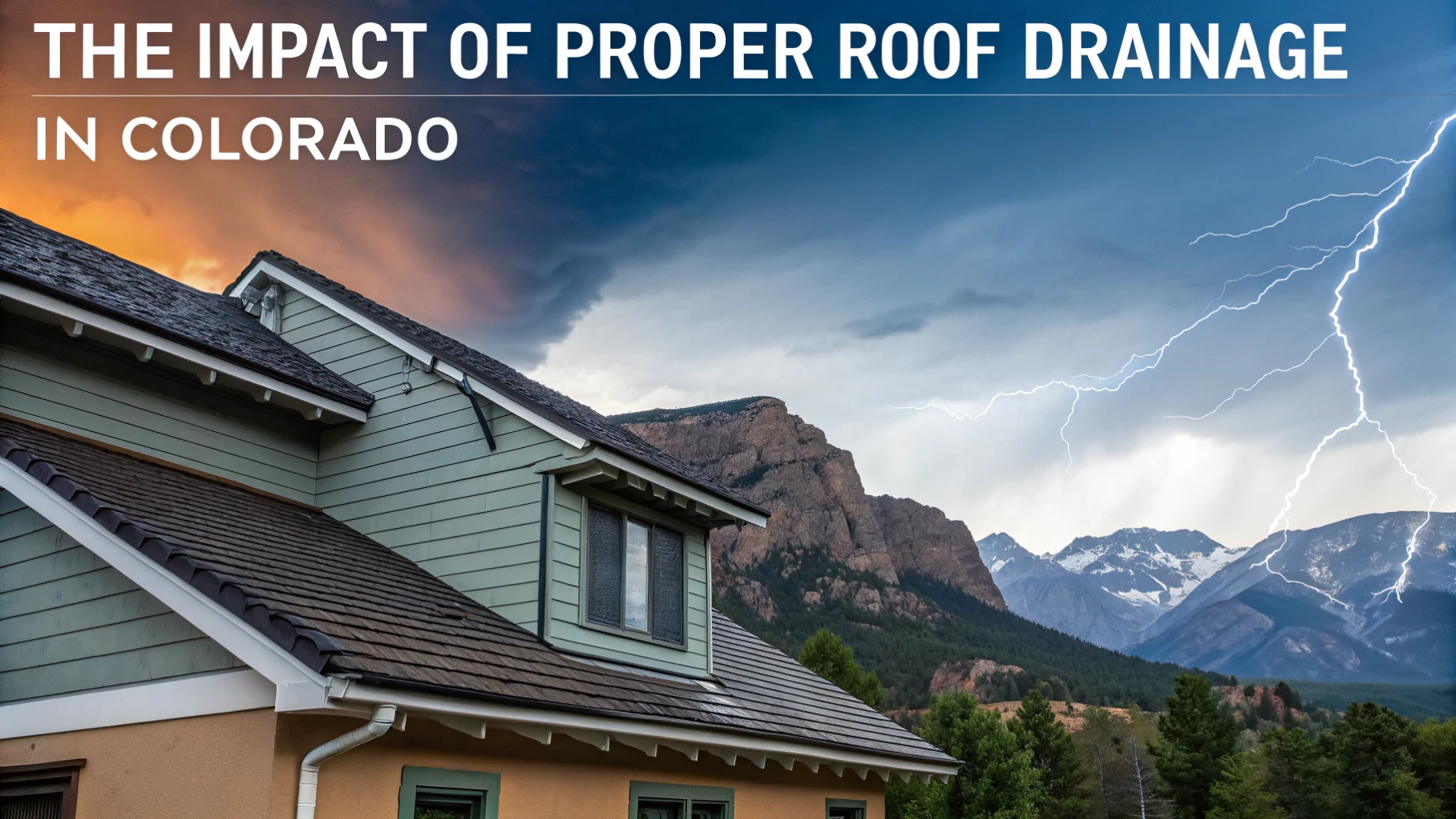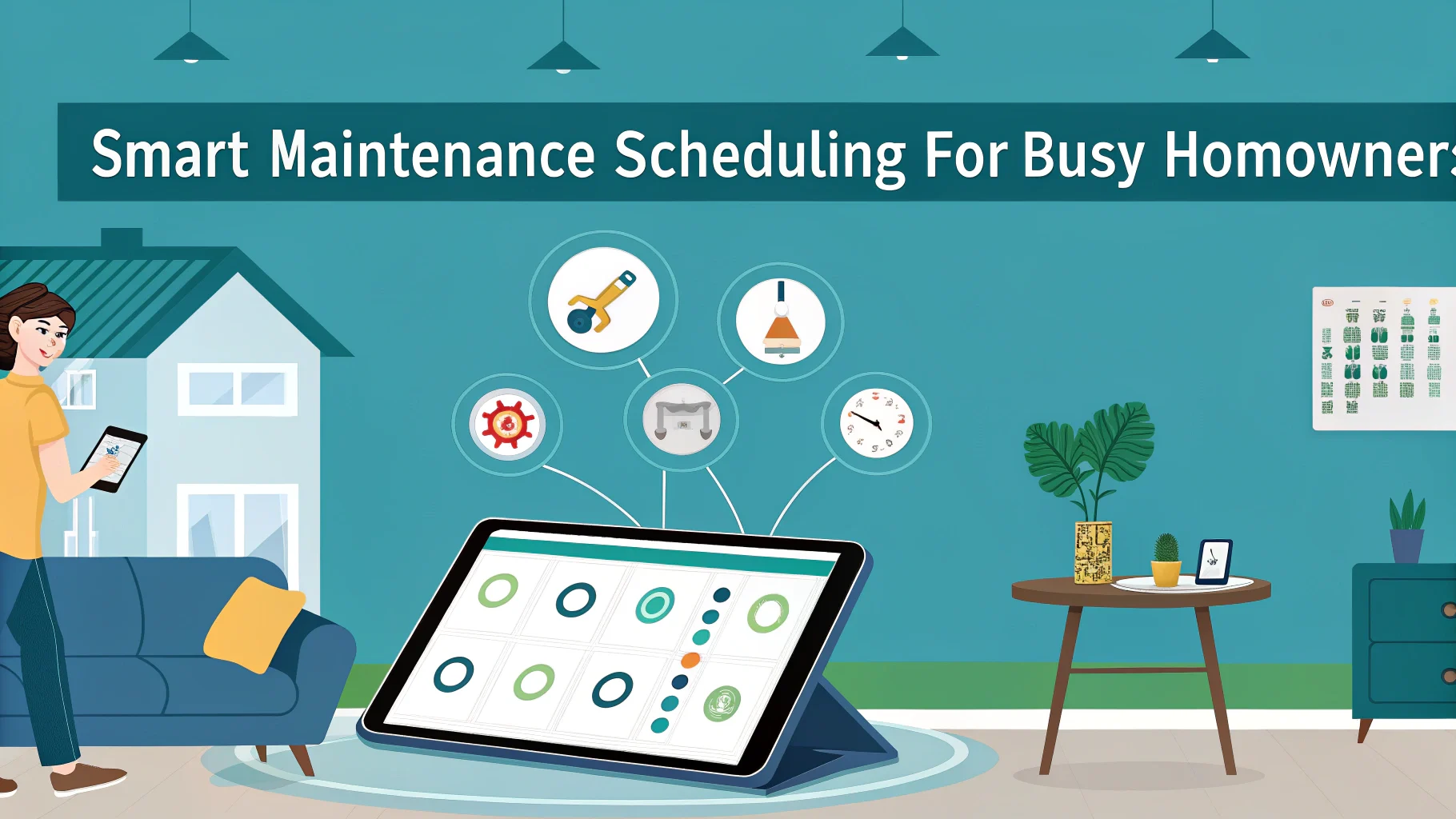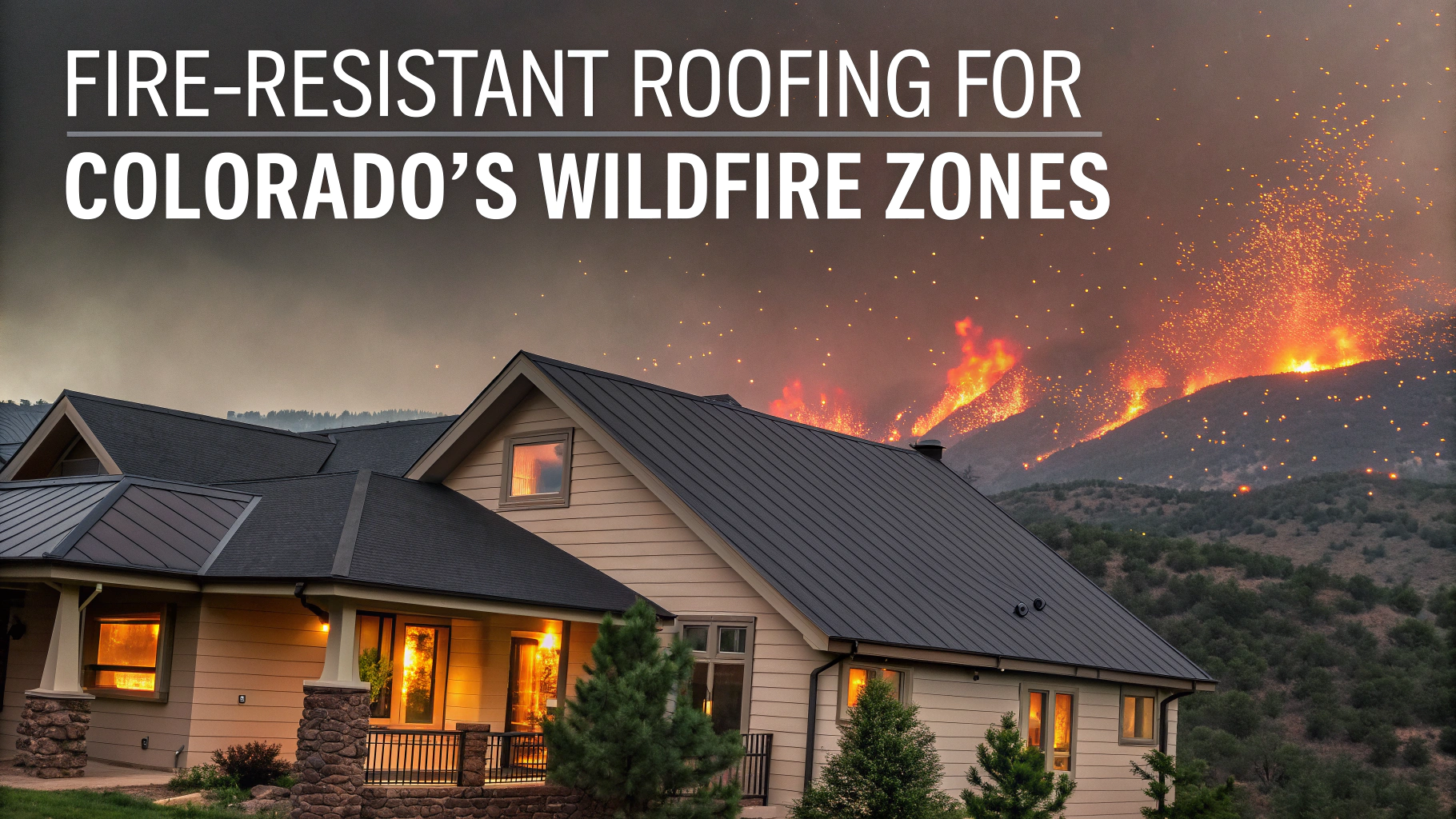Cool roofing technology offers a practical solution for combating urban heat islands, which occur when cities experience higher temperatures than surrounding rural areas.
Buildings with traditional dark roofs absorb significant solar radiation, contributing to increased cooling costs and environmental strain in metropolitan regions like Colorado.
This guide explores effective cool roofing options that can help reduce urban temperatures while providing substantial energy savings for property owners.
Types of Cool Roofing Materials
- Reflective Coatings
- White elastomeric coatings
- Aluminum-based reflective paints
- Solar-reflective mineral granules
- Single-Ply Membranes
- TPO (Thermoplastic Polyolefin)
- PVC (Polyvinyl Chloride)
- EPDM (Ethylene Propylene Diene Monomer)
Benefits of Cool Roofing
Properties with cool roofs can experience up to 30% reduction in cooling costs during summer months.
Cool roofs typically last longer than conventional roofs due to reduced thermal stress and UV damage.
Building occupants enjoy improved comfort levels, particularly on upper floors.
Installation Considerations
| Material Type | Installation Method | Maintenance Needs |
|---|---|---|
| Reflective Coating | Spray or roll-on | Recoating every 5-10 years |
| Single-Ply Membrane | Mechanical fastening or adhesion | Annual inspection |
Cost Analysis
Initial installation costs range from $0.75 to $3 per square foot more than traditional roofing.
Energy savings typically offset the additional upfront costs within 3-5 years.
Local Requirements and Incentives
- Colorado building codes may require specific solar reflectance values
- Local utility companies often provide rebates for cool roof installations
- Federal tax incentives may apply for energy-efficient improvements
Maintenance Tips
- Schedule bi-annual professional inspections
- Clean the roof surface regularly to maintain reflectivity
- Address repairs promptly to prevent damage to the reflective coating
- Document all maintenance activities for warranty purposes
Professional Installation Support
Contact the Colorado Roofing Association at (303) 484-0549 for certified cool roof installers.
Request multiple quotes from licensed contractors who specialize in cool roofing systems.
Ensure your contractor is familiar with local building codes and Energy Star requirements.
Taking Action for a Cooler Future
Schedule an energy audit to determine if your building would benefit from cool roofing technology.
Research available incentives through the Database of State Incentives for Renewables & Efficiency (DSIRE).
Consider implementing cool roofing as part of your next scheduled roof replacement or major renovation.
Environmental Impact Assessment
Cool roofs contribute significantly to reducing greenhouse gas emissions and urban air pollution.
Studies show that widespread adoption of cool roofing can lower city temperatures by up to 3 degrees Fahrenheit.
Reduced energy consumption leads to decreased power plant emissions and improved air quality.
Weather Considerations in Colorado
Summer Benefits
- Maximum reflection of solar radiation during intense summer heat
- Reduced strain on air conditioning systems
- Lower peak energy demand during heatwaves
Winter Performance
- Minimal heating penalty due to steep sun angles
- Snow coverage naturally reflects solar radiation
- Modern insulation systems compensate for reduced heat absorption
Commercial Applications
Large commercial buildings can achieve significant economies of scale with cool roofing installations.
Retail spaces benefit from improved customer comfort and reduced HVAC maintenance.
Warehouses and industrial facilities see substantial reductions in cooling costs during peak summer months.
Building a Sustainable Tomorrow
Cool roofing technology represents a crucial step toward creating more sustainable urban environments.
Property owners who invest in cool roofing solutions contribute to both environmental protection and long-term cost savings.
As climate challenges continue to grow, cool roofing will become increasingly important for maintaining comfortable, energy-efficient buildings.
FAQs
- What is a cool roof and how does it help combat urban heat islands?
A cool roof is a roofing system designed to reflect more sunlight and absorb less heat than traditional roofs. It typically uses highly reflective materials or special coatings that can reflect up to 80% of sunlight, reducing building temperatures and helping to minimize urban heat island effects. - What are the most common cool roofing materials available in Colorado?
Common cool roofing materials in Colorado include reflective metal roofing, white TPO (thermoplastic polyolefin), light-colored concrete tiles, solar-reflective asphalt shingles, and white EPDM (ethylene propylene diene monomer) rubber membranes. - How much energy can I save with a cool roof in Colorado?
Cool roofs can reduce cooling energy costs by 10-30% during summer months in Colorado. However, actual savings depend on factors like building size, insulation levels, local climate conditions, and the specific type of cool roofing material used. - Are cool roofs effective in Colorado’s winter climate?
While cool roofs may slightly increase heating costs during winter, the summer cooling benefits typically outweigh winter heating penalties in Colorado’s climate. Modern cool roofing materials are designed to balance both seasonal requirements. - What is the typical lifespan of a cool roof in Colorado?
Cool roofs in Colorado typically last 15-30 years, depending on the material type. Metal cool roofs can last up to 40 years, while single-ply membranes like TPO generally last 15-20 years with proper maintenance. - How do cool roofs perform in severe Colorado weather conditions?
Quality cool roofing materials are designed to withstand Colorado’s severe weather, including hail, high winds, and heavy snow. Many cool roofing products meet or exceed local building codes for weather resistance and durability. - What maintenance is required for cool roofs in Colorado?
Cool roofs require regular inspections, cleaning to maintain reflectivity, removal of debris, and checking for damage from severe weather. Recommended maintenance frequency is typically twice per year, with additional inspections after major storms. - Do cool roofs meet Colorado building codes and regulations?
Yes, most cool roofing products meet Colorado building codes. Many jurisdictions in Colorado have adopted energy codes that specifically address cool roofing requirements, particularly for commercial buildings in urban areas. - What are the upfront costs compared to traditional roofing in Colorado?
Cool roofing materials typically cost 10-30% more than traditional roofing options initially. However, energy savings, potential rebates, and longer lifespans often make them cost-effective over time. - Are there local incentives for installing cool roofs in Colorado?
Several Colorado municipalities offer incentives for cool roof installations, including tax rebates, reduced permit fees, and utility company programs. Denver’s Green Buildings Ordinance specifically promotes cool roofing solutions.
